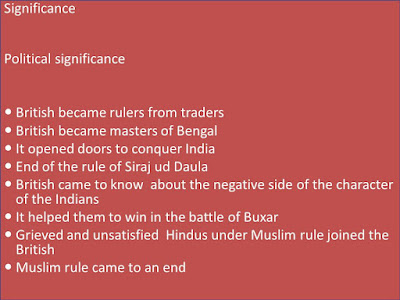 |
| Kolkata, Armenian church. Inditales |
has brought to light an interesting information that I have not come across before. It is about the Armenian trading community who sided with the English company and helped Robert Clive win the Battle at Plassey (1757), West Bengal.
The Armenians had been living in India for a pretty long time, roughly seven centuries before the arrival of Vasco de Gama on the Malabar coast in 1498. The first Armenian to reach the coastal Kerala in 780 was one Thomas Cana whose trading interest included spices and muslin. For reasons of religious suppression, forced conversion, etc., a large community of Armenians moved from places like Persia,
Turkey and Afghanistan into India to lead a peaceful life and start their trading afresh. They worked along with the resident European
community and engaged in trades. They, over a period of time, settled
across India. Surat in Gujarat, Bombay in Maharashtra, Madras (Chennai) in Tamil Nadu, Banares (Kasi /Varanasi) in UP., Murshdabad and Kolkata
in W. Bengal, etc., were some of the places where they were successful
traders.
In Chennai there is a famous street called Armenian Street near the
Chennai port. So is an Armenian church in the same locality. Now almost
all are gone from Chennai. Armenian Ghat in Kolkata
is the legacy of Armenian community of this region. In the 20th
century there population was around 25,000.
 |
| Siraj-ud-DullahIndiaOnline.in |
 |
| Robert Clive. Wikipedia |
The Armenians were successful traders during the Colonial time for a few good reasons: they adopted the British way of life and dealings. They learned their language and customs so that they could be comfortable with them. As far as trade dealings were concerned they were prompt and went by letter and spirit. They stuck to the trade agreements. The conflicts between the British colonists and the ruling royal Indian families helped them a lot. In mid 18th century - 1744 about 4000 Armenians settled in Calcutta from Persia and Afghanistan.
In the 1700s when the British were trying hard to hold on to Bengal firmly, three prominent Armenians were highly influential and were close to the seat of power. They were:
Khoja Wajid: He was an expert in saltpetre trade and had good working relations with
other Europeans including the French. Wajid, who supported Robert Clive politically, was later arrested on suspicion that he had secret contact with the French. While in
confinement he killed himself.
Joseph Emin: He travelled to London and stayed there for a decade (1750 -1760s) and gained the trust of some of the well-known English nobility notably Edmund Burke, Mrs. Montagu, Sir William Jones and others. He had military training at Woolwich and upon return to Bengal, he joined Clive's forces in 1772 to fight against the French Army.
Khoja Petrus Aratoon: He was a growing businessman and earned the trust of the English company to such an extent that he supplied provisions to the garrison soon after the Black Hole (June 20 1756) incident (at Fort William) and recapture of the fort by the British. Being close to Clive, the latter used him as a secret agent during negotiations with Jaffer (a relative of the Nawab Siraj-ud-Daualah)) in the conspiracy to overthrow the Nawab in power. Being charitable, he was the one who renovated the Armenian Holy Church of Nazareth in 1663 with two altars and fine paintings and frescoes in the interior.
 |
| Armenian church, Calcutta, WB. en.wikipedia.org |
Above image: Located in an Armenian Church (Holy Church of Nazareth first built in 1688; rebuilt in 1724 after a fire mishap) the oldest Christian tombstone in an Armenian Church, Calcutta. It is that of one Rezabeebeh Sookia, who died on 11 July 1630. She was close to the Church..............................
During the English consolidation in Bengal and other places, Armenians served the British interests well and some held exalted positions in the colonial period. Armenians played a considerable role in building East India House at Leaden hall Street - the headquarters for many years of the world’s first multinational company. As for Aratoon, who might have headed Bengal after Mir Quasim but, unfortunately, this was not to be. He was assassinated in 1763 for unknown reasons.
 |
| Battle of Plassey. SlideShare |
 |
| SlidePlayer |






.webp)



